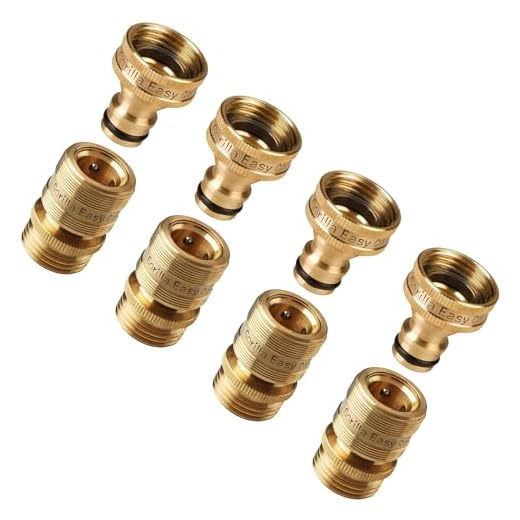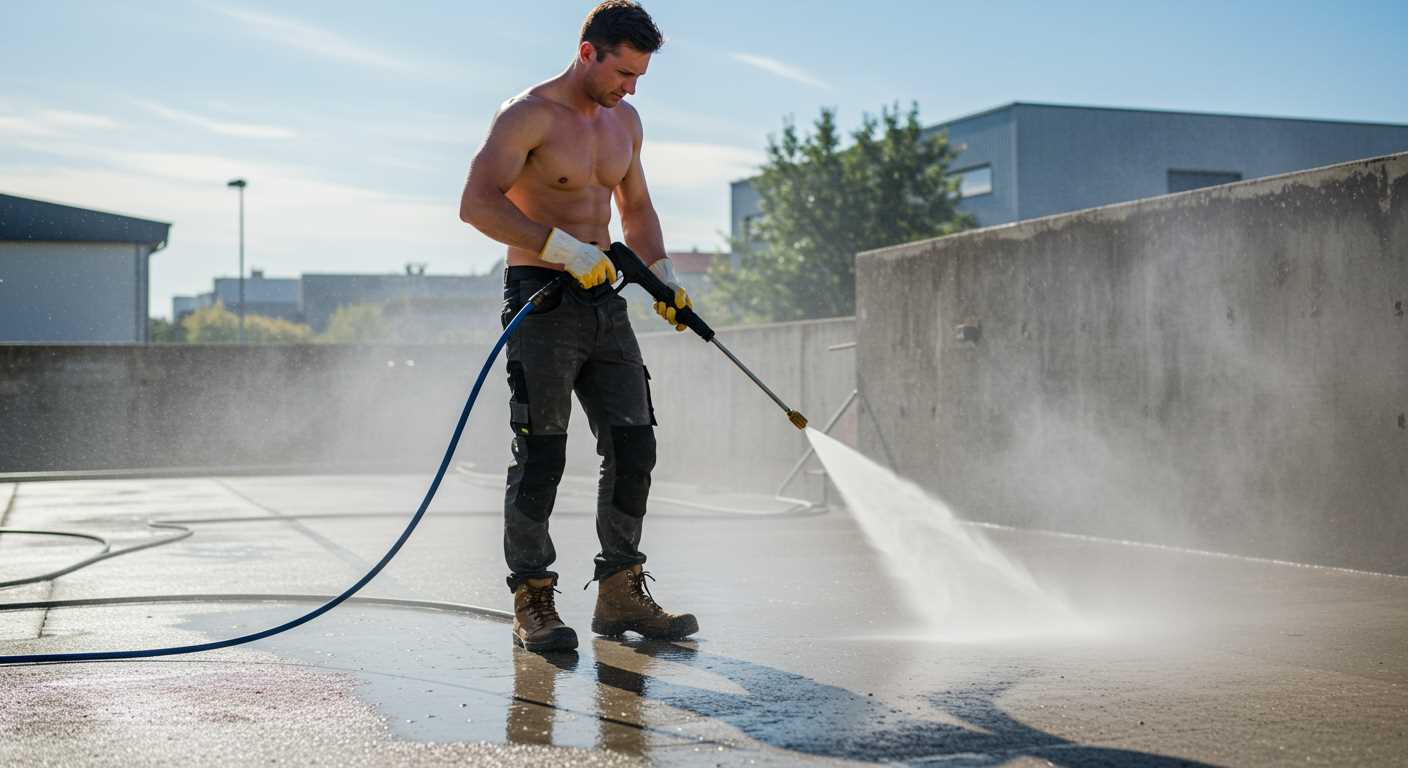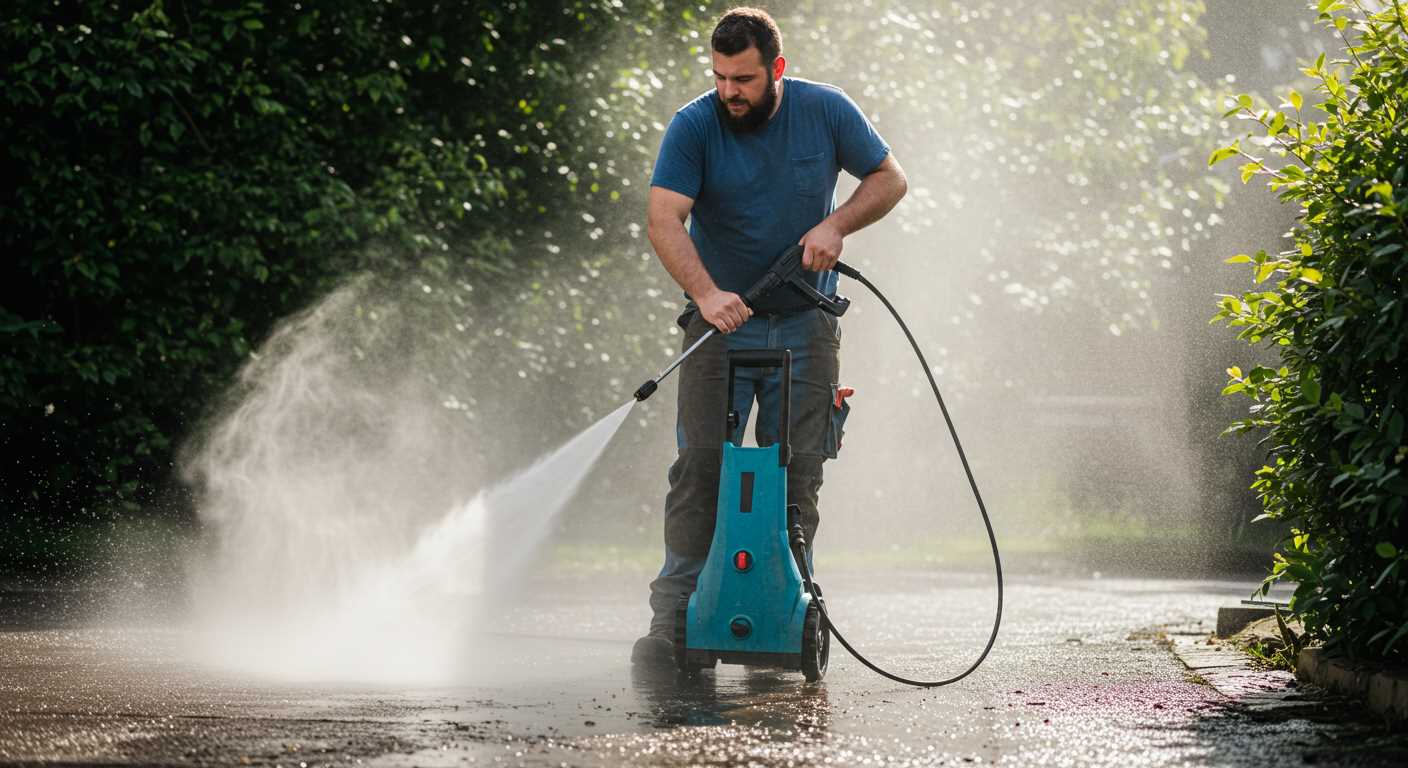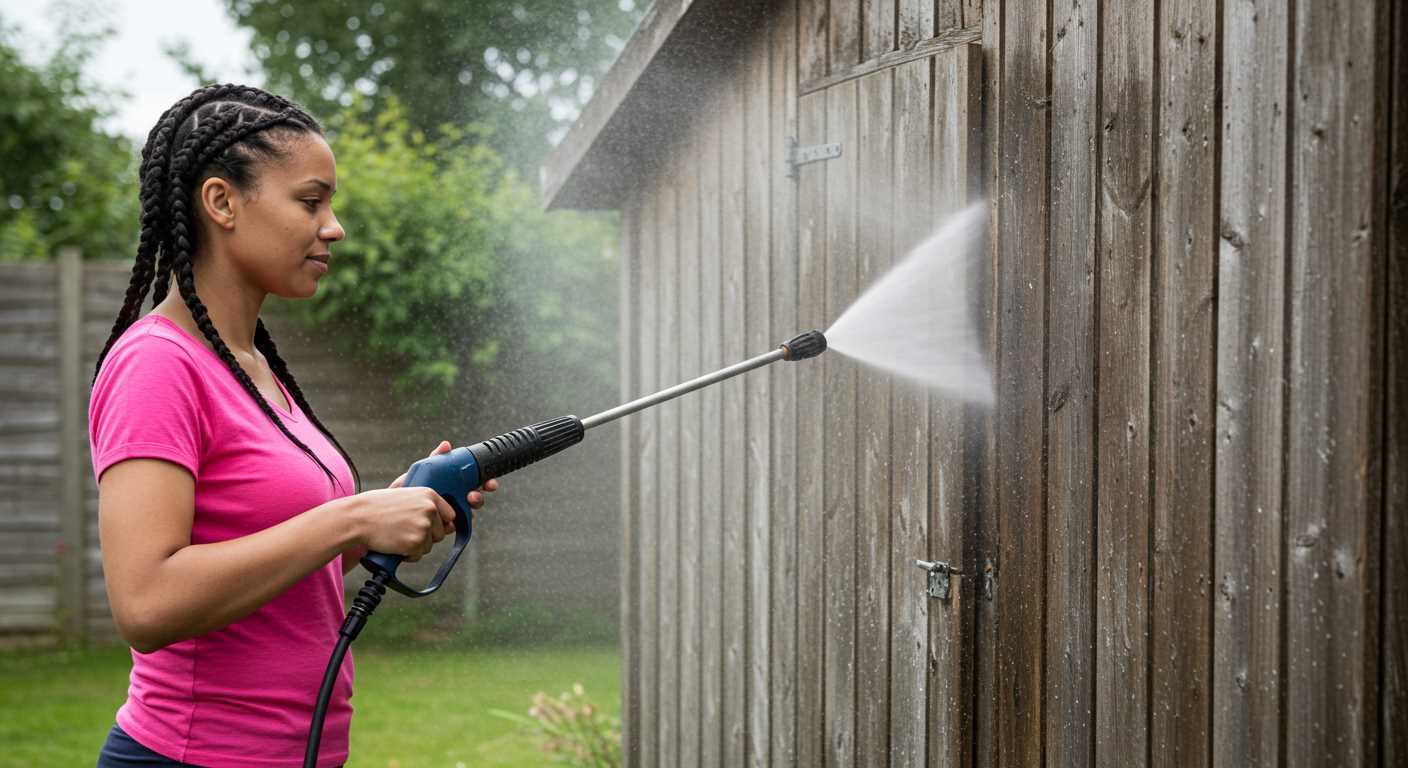



To connect your cleaning unit securely and efficiently, the correct fitting is a fundamental aspect. Standard sizes include 1/4 inch quick connect fittings for most residential models, while commercial options may require 3/8 inch types. Identifying whether your machine has a male or female outlet is essential, as this will influence the type of accessory you purchase.
The material of the fitting is equally significant. Brass fittings provide durability and resistance to corrosion, making them a reliable choice for long-term use. In contrast, plastic options are lightweight and cost-effective but may not withstand high pressures over time. Evaluating your usage frequency and intensity will guide you toward the appropriate material selection.
Furthermore, consider the compatibility with your existing accessories. A range of nozzles and extensions may be available, but they must match the fitting size and type for optimal performance. Always check for manufacturer specifications before making a purchase to avoid unnecessary returns or operational issues.
Choosing the Right Accessory for a High-Pressure Cleaner
Select a quick-connect fitting that matches the wand and the outlet of your cleaning device. Typically, a ¼-inch quick coupler provides a secure attachment, suitable for various models. Ensure compatibility by checking the specifications outlined in the product manual.
Types of Connectors

Common options include threaded, bayonet, and quick-release types. Here’s a brief overview of each:
| Type | Description | Usage |
|---|---|---|
| Threaded | Standard screw-on design | Found on many older models |
| Bayonet | Twist and lock mechanism | Often used in commercial equipment |
| Quick-Release | Snap-on feature for easy attachment | Ideal for rapid changes between tasks |
Considerations for Selection
.jpg)
Check the diameter and thread pitch to avoid leaks. Material choice–brass, plastic, or stainless steel–affects durability and resistance to wear. For frequent use, brass or stainless steel options are more reliable, whereas plastic may suffice for occasional tasks.
Understanding Pressure Washer Hose Types
Choosing the right tubing is crucial to ensure optimal performance and compatibility with your equipment. Various variants are available, each tailored to specific task requirements and machine specifications.
Here’s a breakdown of common types:
- Rubber: Renowned for flexibility and durability. Ideal for high-pressure tasks, resistant to kinks.
- PVC: Lightweight and easy to handle. Typically less expensive but may lack the resilience of rubber under high pressure.
- Reinforced: Built with additional layers for strength, suitable for heavy-duty use. Common in commercial-grade models.
- Thermoplastic: Combines benefits of rubber and PVC, offering flexibility with a lightweight structure. Good for varied environments.
In terms of diameter, you’ll generally find options like 1/4”, 3/8”, and 1/2”, each determining the water flow rate and pressure. Here’s a quick reference on sizing:
- 1/4”: Typically for residential models. Sufficient for light tasks.
- 3/8”: Common in commercial equipment, providing higher flow and pressure for professional applications.
- 1/2”: Less common, preferred for industrial solutions requiring maximum performance.
Always verify compatibility with your cleaning machine’s specifications, as mismatched sizes can lead to inefficiencies and damages. Ensuring your setup is appropriate will enhance both the longevity of the equipment and the quality of results achieved.
Identifying Your Pressure Washer’s Connection Size
To accurately ascertain the right connection size, measure the diameter of the intake fitting on your machine. Most units feature a size ranging from 1/4 inch to 3/8 inch. A standard garden variety usually utilises a 3/4 inch connector. Use a caliper or tape measure for precision.
Check your user manual as well; it’s the definitive guide for specifications. If lost, look up your model number online to obtain the original resources. Some manufacturers also provide schematics or guides on their websites, simplifying the identification process.
It’s essential to note that there are varying thread types such as NPT (National Pipe Thread) and BSP (British Standard Pipe). Ensure compatibility; an NPT connector won’t properly fit a BSP thread, leading to leaks. Always confirm the thread type when making purchases.
If you encounter difficulty with measurements, consider bringing your unit or the fitting to a local hardware store. Expertise from staff can point you toward the correct size. Avoid guesswork; a mismatched connector can result in inefficient performance or damage.
Lastly, keep in mind that maintaining a secure and leak-free connection is paramount for optimal operation. Regularly inspect fittings for wear and replace them as necessary to ensure longevity and functionality of your equipment.
Choosing Between Quick Connect and Screw-On Connectors
I recommend quick connect fittings for their convenience and rapid attachment. These mechanisms allow for seamless engagement and disengagement, streamlining your setup process. If efficiency and mobility are your priorities, this option is ideal.
Conversely, screw-on fittings provide a more secure and stable connection. If your tasks involve prolonged use or high-pressure situations, this type might be preferable. The threaded design ensures minimal leakage and robust durability under pressure.
Assess the frequency of your cleaning tasks. If you are frequently switching attachments or moving between different cleaning areas, quick connects significantly reduce downtime. However, for extensive projects requiring consistent pressure, screw-on types can guarantee reliability and stability.
Compatibility with existing equipment is key. Ensure that the selected fitting type matches your current accessories to avoid frustration. Additionally, consider the material; brass fittings, for instance, are often more durable than plastic counterparts, providing longevity regardless of the connection type.
Ultimately, the choice hinges on balancing convenience with security. A quick connect may suit casual users, while professionals might favour the assurance of a screw-on connection. Select based on your specific cleaning needs and equipment compatibility.
Material Considerations for Hose Connectors
Selecting the appropriate materials is critical for ensuring longevity and performance. The two most common materials are brass and plastic, each offering distinct advantages.
- Brass: Known for its durability and resistance to corrosion, brass connectors provide a strong, leak-free connection. This metal can withstand high pressures and is suitable for frequent use.
- Plastic: Lightweight and often more affordable, plastic connectors are a good choice for occasional users. However, they can be less durable and may degrade over time if exposed to UV light or extreme temperatures.
It’s essential to consider temperature and pressure ratings when choosing materials. Brass components often handle higher temperatures and pressures than plastic ones, making them better suited for heavy-duty applications.
Another aspect to consider is compatibility with other equipment. Using connectors made from the same material can prevent galvanic corrosion, which occurs when different metals interact in the presence of moisture.
Additionally, look for connectors with a rubber seal or washer to enhance the tightness of the connection, reducing the chance of leaks.
Lastly, read reviews and consult manufacturer specifications to ensure the selected connector meets your requirements. Choosing the right material not only optimizes performance but also extends the lifespan of your system.
Compatibility with Different Pressure Washer Brands
When selecting fittings, it’s crucial to consider compatibility across various manufacturers. Each brand, like Karcher, Ryobi, and Black & Decker, often has proprietary designs that affect how attachments fit. For instance, Karcher products frequently utilise a bayonet style connection, while others might favour a more traditional threaded option.
Identifying the specific model is key. Look for manufacturer documentation or labels on the machine that detail the correct specifications. This information will guide you in selecting an appropriate adapter if the standard attachments don’t fit.
Also, be aware of the nominal sizes typically used. Most brands fall within a standard range, but variations exist. Measure the diameter of the outlet to ensure a snug fit. If you’re adapting to different brands, focus on those common sizes used in your equipment.
Universal kits can often help bridge the gaps between models, but make sure they are rated for the performance levels of your cleaning equipment. For top brands, cross-reference compatibility charts available online or in retailer specifications to ensure seamless operation.
Occasionally, a simple visit to consumer forums or manufacturer’s customer support can yield valuable insights from other users who faced similar compatibility challenges. Their shared experiences often provide tips on what works best across various brands.
How to Measure Hose Diameter for Accurate Fit
Determine the inner diameter using a vernier caliper or a tape measure. Make sure the measuring tool is snug inside the tubing but not too tight to distort it. Record the measurement in millimeters or inches for precision.
If you are using a tape measure, wrap it around the exterior. Calculate the circumference and divide by π (approximately 3.14) to get the inner diameter.
For rounded shapes, if the diameter isn’t clear, use a piece of string. Wrap it around the widest part, mark where it overlaps, measure the length, then divide by π as mentioned before.
Remember to measure several points along the length, as wear can cause inconsistencies. Take the smallest diameter from your measurements to ensure a snug fit.
Verify that the chosen fitting matches the measurement before installation. A precise match prevents leaks and improves the overall performance of the equipment.
Maintaining Hose Connectors for Longevity
Regular inspection of these fittings is paramount. Look for signs of wear, corrosion, or any cracks. If you notice imperfections, replace them immediately to prevent leaks and ensure optimal performance.
Cleaning the connectors after each use can significantly extend their lifespan. I recommend using a soft brush and mild detergent to remove any dirt or debris. Rinse them thoroughly and allow them to dry completely before storing.
Storage Tips

Keep connectors in a cool, dry place away from direct sunlight. Extreme temperatures can weaken materials and lead to failure over time. Use storage bins or trays to prevent tangling and protect them from damage during transport.
Regular Lubrication
Applying a silicone-based lubricant occasionally can help maintain smooth operation. This practice reduces friction and wear, especially on threaded connectors. Be cautious not to overapply, as excessive lubricant can attract dirt.
Where to Purchase Hose Connectors for Pressure Washers

Local hardware stores typically stock a range of connectors suitable for various models. Visiting these stores allows me to physically check compatibility and gauge materials before making a decision.
Online marketplaces like Amazon and eBay offer an extensive selection with customer reviews to help assess quality and performance. Supplier websites, such as those for major brands, often provide a more specific inventory tailored to their products.
Specialty cleaning equipment retailers are another excellent option. They usually carry a curated assortment of high-quality items and may offer valuable insight based on their expertise.
Consider checking wholesale suppliers as well, especially if planning to purchase in bulk. Many of them provide competitive pricing and larger inventories.
Membership in trade organisations or local clubs can also lead to exclusive discounts and access to niche suppliers focused on the cleaning equipment market.
Lastly, do not overlook second-hand options. Websites that facilitate local sales often have gently used connectors that can serve as a cost-effective alternative.










